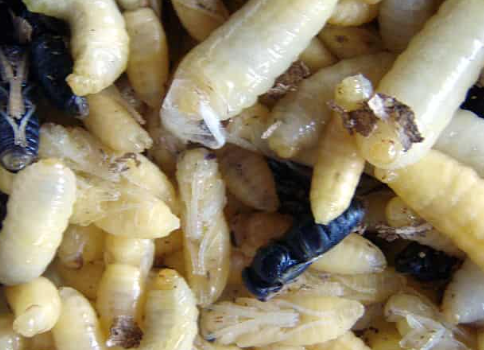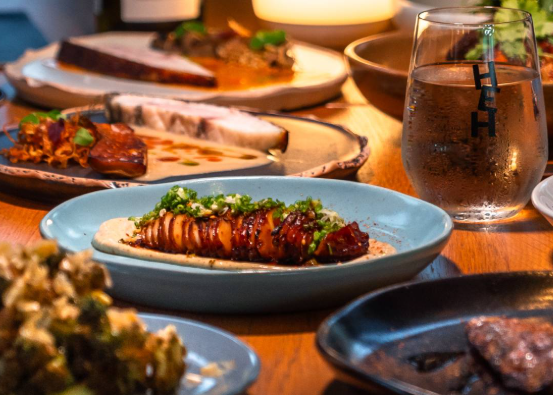
Asia is home to some of the most unique and adventurous cuisines, where food culture reflects a deep connection with local traditions and creativity. For many travelers, eating in Asia is a daring culinary experience—one that pushes the boundaries of comfort and challenges the idea of what’s considered edible. From crunchy insects to exotic animal parts, here’s a look at some of the weird and wonderful foods you can encounter while traveling across the continent.
Thailand: A Land of Insects and Unconventional Delights
Thailand is well-known for its street food culture, where you’ll find a variety of traditional dishes that might seem unusual to outsiders but are a beloved part of daily life. For example, in the rural Isaan region, deep-fried crickets, mealworms, and silkworms are common snacks. These insects are often enjoyed as crunchy treats, and though they might seem off-putting, they’re a good source of protein and an everyday snack for locals.
If you’re feeling adventurous, you might also encounter dishes like cow placenta, which is served in some northeastern villages after a cow gives birth. The taste is similar to beef, but the experience of knowing what you’re eating is quite a conversation starter.
Cambodia: The BUG Café and Fried Tarantulas
In Siem Reap, Cambodia, you can visit the famous BUG Café, where the menu specializes in insect-based dishes. The taster platter here includes fried scorpions, water bugs, and tarantulas, offering an authentic and unforgettable experience. While some dishes, like the tarantula, are crispy and crunchy, others like the water bug release a gooey liquid that might challenge even the bravest eaters.
In another town, Skuon, fried tarantulas are a local delicacy. The meat is surprisingly white and mild, though it might take a bit of bravery to bite into these eight-legged creatures. For many visitors, it’s the ultimate test of culinary courage.
Myanmar: Palm Weevil Larvae
In Myanmar, particularly in Yangon, you can find an unusual food item that even the locals regard as a rare treat: palm weevil larvae. These white, squirmy creatures are deep-fried and have a surprising taste—crunchy on the outside and creamy on the inside. Though it might not be a typical part of every meal, trying one of these larvae provides a unique taste of Myanmar’s rich culinary diversity.
Philippines: A Delicacy of Duck Embryos and Stuffed Frogs
In the Philippines, two dishes stand out for their unconventional ingredients. The first is balut, a fertilized duck egg, which contains a partially developed chick. The egg is boiled and eaten with salt and vinegar, and it’s a popular street food across the country. The experience can be confronting for first-timers, but the rich, savory taste of the egg and chick has earned it a devoted following.
Another dish, known as “betute” or stuffed frogs, hails from the province of Pampanga. These frogs are stuffed with seasoned pork, garlic, and spices before being deep-fried to perfection. The result is a crispy, tender dish that tastes surprisingly like chicken, making it an interesting dish for adventurous eaters.
South Korea: Live Octopus (San-nakji)
In South Korea, one of the most daring dishes you can try is san-nakji, which consists of live baby octopuses. The octopus is cut into pieces and served while still wriggling, often seasoned with sesame oil and seeds. The chewy, slippery texture may challenge even the most adventurous eaters, but it’s a staple in some seafood restaurants, particularly at the bustling Noryangjin fish market in Seoul.
Taiwan: Stinky Tofu and Duck Tongues
Taiwan is famous for its stinky tofu, a fermented dish that lives up to its pungent name. Often deep-fried and served with pickled vegetables and soy sauce, stinky tofu has an acquired taste that can be off-putting for newcomers due to its strong smell. Yet, for those brave enough to try it, the crispy exterior and salty flavor might just win you over.
Another unique snack is crispy fried duck tongues, which are a popular bar snack in Taiwan. Though not as meaty as other parts of the duck, the crispy texture and savory flavor make it an enjoyable treat, especially when paired with a cold drink.
Vietnam: Cobra Heart and Snake Blood
In Vietnam, one of the most fascinating (and intimidating) foods is the cobra heart. At certain restaurants in Hanoi, you can select your cobra, which is then killed in front of you, and its heart is served in a shot glass filled with rice wine. This unique experience, though not for the faint of heart, is said to provide strength and vitality. Along with the heart, various cobra dishes, such as sautéed meat and snake testicles, are also offered, making for an unforgettable culinary experience.
Japan: Raw Chicken Sashimi and Black Eggs
Japan offers some peculiar dishes for the daring eater, with one of the most unique being raw chicken sashimi. It’s served as thin slices of raw chicken, often accompanied by soy sauce and green onions. Although eating raw chicken poses health risks, some restaurants take extra precautions to ensure safety, and the dish is known for its tender texture and delicate flavor.
Another intriguing Japanese food is the black egg, or “kuro-tamago,” found near Mount Fuji. These eggs, boiled in the sulfur-rich waters of Ōwakudani, have a distinct black color and a subtle sulfur taste. It’s said that eating one can add seven years to your life, making it a must-try for visitors.
China: Sheep Penis and Rabbit Skulls
In China, you’ll find some truly unusual foods. In Beijing’s Wanfujing market, skewers of scorpions are a common sight, but perhaps the most surprising is the sheep penis. This rubbery, pale delicacy is often served on a stick, and though it may not look appetizing, it’s a snack that draws a crowd of curious tourists.
Meanwhile, in Chengdu, rabbit skulls are a beloved local snack. The skulls are often seasoned and served as a finger food, with the main attraction being the brain. Though the appearance might be off-putting, the dish offers an unexpected, flavorful experience for those willing to give it a try.
Conclusion: Embrace the Weirdness
The world of Asian cuisine is full of surprises, and the weird foods you encounter during your travels are an essential part of the experience. While some dishes may push your limits, they offer a window into the cultures and traditions that make Asia so unique. Whether it’s fried insects, exotic animal parts, or fermented delicacies, embracing the weirdness of food is an adventure that will leave you with unforgettable memories.








